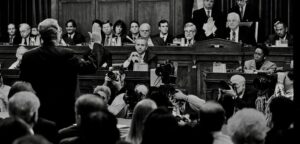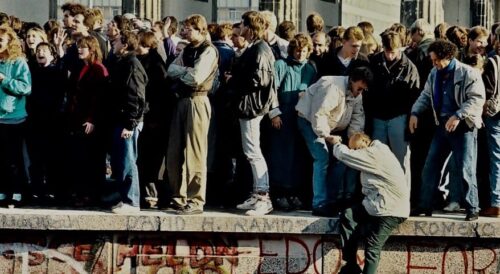
David Krugler Discusses the Fall of the Berlin Wall & the End of the Cold War
November 9 marks the thirtieth anniversary of the fall of the Berlin Wall. This momentous event signaled the eventual dissolution of the Soviet Union and the end of a “Cold War” struggle that had lasted over four decades.
We asked Professor David Krugler, who edited our core document collection, The Cold War, to talk with us about the events leading up to November 9, 1989 and the sudden conclusion of an ideologically driven conflict that involved the world at large. Krugler, Professor of History at the University of Wisconsin–Platteville, is a visiting professor in the Master of Arts in American History and Government program, teaching such courses as “The Rise of Modern America, 1914-1945” and “American Foreign Policy.”
The United States began building a strategy to counter the Soviet empire shortly after the Second World War ended. Was that strategy primarily diplomatic, or military?
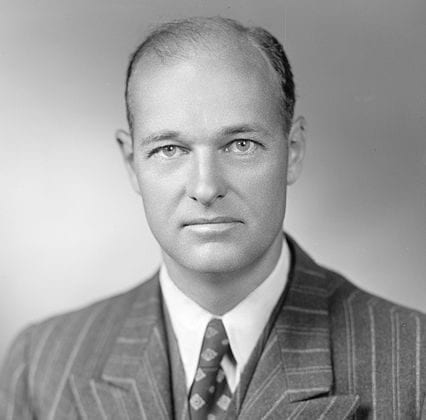
It was both. The basic strategy of “containment” emerged within President Truman’s State Department, from the analysis of George Kennan, in his “Long Telegram” of February 22, 1946 (Document 1 in the Cold War volume). Kennan, Deputy Chief of the US Embassy in Moscow, when asked to explain USSR opposition to the World Bank and International Monetary Fund, offered a more wide-ranging analysis. He discussed the methods and motives of Soviet communism and how the US should respond. Recommending “a long-term, patient but vigilant containment of Russian expansive tendencies,” Kennan argued that the US should carefully and strategically choose its points of resistance. Kennan became head of the policy planning staff in the State Department but was removed by Dean Acheson, who didn’t think Kennan was sufficiently militarizing containment. In fact, Truman, in his Special Message to the Congress on Greece and Turkey (Document 2), which articulated the “Truman Doctrine,” had effectively vowed to resist any Soviet effort to expand its empire or influence.
The man who took Kennan’s place, Paul Nitze, authored NSC 68 (Document 6). This document militarized containment, outlining specific defense policies and needs. In June 1950, just two months later, North Korea attacked South Korea and the merits of Nitze’s recommendation to increase defense spending seemed confirmed.
The last three documents of the volume on the Cold War originate just before and during the fall of the Berlin Wall. Would you explain their significance? First, why did you include Reagan’s speech at the Brandenburg gate (Document 43) in June 1987?
Reagan’s “Remarks on East-West Relations” not only display his great rhetorical gifts; they exemplify the singularity and consistency of his Cold War position. He came into the presidency determined to shape the outcome of the Cold War—not just to manage it. He wanted victory for the United States. In his address, he calls the Berlin Wall a failure of Communism. He’s not the first president to do so. When John F. Kennedy went to the wall in 1963 (Document 27), he called the Berlin wall a vivid symbol of “the great issue between the free world and the communist world. . . . Freedom has many difficulties and democracy is not perfect, but we have never had to put a wall up to keep our people in, to prevent them from leaving us,” he noted. But Reagan went further, calling upon Gorbachev to “tear down this wall.” The State Department was beside itself about that portion of the speech, which they thought needlessly provocative. They made considerable efforts to try to talk the president and those close to him out of saying it. But Reagan insisted. He understood that without that line, it would be just another speech about the need for liberty and the failure of communism. Challenging Gorbachev to take the wall down, he declared how he wanted the Cold War to end.
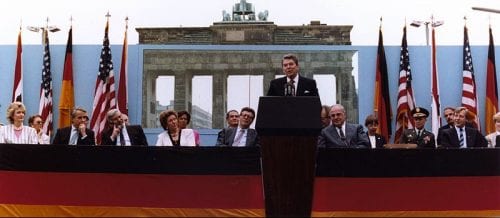
The final document is the transcript of a telephone conversation between President George H. W. Bush and West German Chancellor Helmut Kohl on November 10, 1989. This happens at the moment when Reagan’s vision for the end of the Cold War is actually coming true. Yet Bush adopts a completely different tone; he senses this is not a time for triumphal rhetoric.
Yes, Bush says, “I want to see our people continue to avoid especially hot rhetoric that might by mistake cause a problem.” Americans must not start dancing on the grave of the Berlin Wall and of communism; we need to be temperate. This transcript, like Reagan’s speech at the Brandenburg Gate, shows a particular president in action, doing what he does very well.
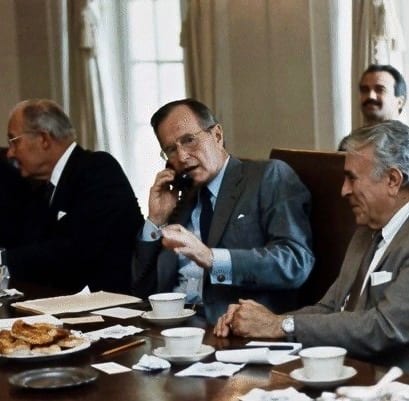
Bush spends most of the conversation listening. Students might take away the impression that he is being passive and reactive. In fact, Bush has made a conscious decision: the Americans need to be involved, but first, they need to learn how best to be involved. He takes Kohl’s advice when Kohl says, in effect, look, the Poles are eager to rid themselves of communism, but they don’t have the tools to succeed. They’ve been oppressed for so long, and their current leaders were in prison a short while ago. We need the International Monetary Fund to help them out as they restructure their economy. They will need time to transition to representative institutions.
In between Documents 43 and 45, you chose Document 44, National Security Directive 23, “United States’ Relations with the Soviet Union.” This was written less than two months before the wall fell. Do its authors foresee what is about to happen?
They offer a very clear-eyed appraisal. While they are not wildly optimistic that the Cold War is about to end on terms greatly favorable to the United States, they see Soviet attitudes changing, leading
. . . to the possibility that a new era may be now upon us. We may be able to move beyond containment to a US policy that actively promotes the integration of the Soviet Union into the existing international system. The USSR has indicated an interest in rapprochement with the international order and criticized major tenets of its own postwar political-military policy. These are words we can only applaud. But a new relationship with the international system cannot simply be declared by Moscow.
The authors say that “a new relationship” would depend upon the demilitarization of Soviet foreign policy and actual fidelity by the USSR to the principles of the world order established in 1945. To prove they really want rapprochement, the Soviets, among other stipulations, “must renounce the principle that class conflict is the source of international tension.” They have to stop spouting the Marxist-Leninist line. This reiterates classic Cold War policy.
But then the authors of NSD 23 venture beyond Cold War thinking. They write that another proof of Soviet commitment to improved relations would be its “willingness to cooperate with the United States to address pressing global problems, including the international trade in drugs and narcotics, terrorism and dangers to the environment.” Already the National Security Council foresees areas in which the United States and post-Soviet Russia might attempt to cooperate. Indeed, just 12 years after this document was produced, 9/11 occurred and countering terrorism became the defining focus of American foreign policy.
What factors led to the collapse of the Soviet Union, and to what extent did American containment policy bring this about?
The failures of the East German state led to the fall of the wall, and those had been building for a while. East German leaders themselves made the decision to ease travel through the wall, although whether they meant to open free passage is disputed. According to one account, the East German official giving the press conference, being unused to the tenacious questioning of western reporters, was pressed on what those changes would mean. Did they mean that people could go back and forth without a pass? Flustered, the official said yes. Another account says that this announcement was not accidental.
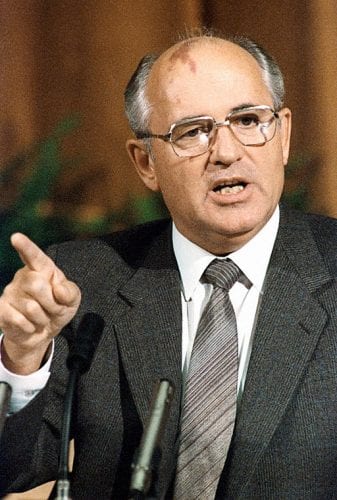
The East Germans could do this because Gorbachev repudiated the Brezhnev Doctrine (1968), which had severely limited the ability of Soviet-bloc governments to liberalize their governments. When Gorbachev withdrew troops from Afghanistan, he encouraged dissidents and opponents of communism to step up their activism. He signaled that communist leaders in Europe now had more independence to make decisions about reforms.
I don’t think Gorbachev expected to end Soviet communism. In the West, we want to translate the terms “perestroika” and “glasnost” into democratic capitalist concepts. We think glasnost means freedom of the press, and perestroika means restructuring the economy into a capitalist system. But Gorbachev hoped only to make communism more credible to the Soviet people. He’d let them offer constructive criticism of their government, and the government would respond with a few reforms. As for restructuring the economy, Gorbachev intended only to shore up the central planning at the heart of communist economics. He had been shocked, when he became Soviet premier, to learn how low worker productivity was. He thought he might raise productivity in part by limiting the cheap availability of vodka, which led to alcoholism, absenteeism, mistakes, and workplace accidents. He didn’t want to pivot to a market economy; he wanted to resuscitate communism. But he unleashed forces he couldn’t master.
Reagan hoped this would happen. And he lived to see it.
Did Reagan’s defense buildup help to bring about the end of the Cold War?
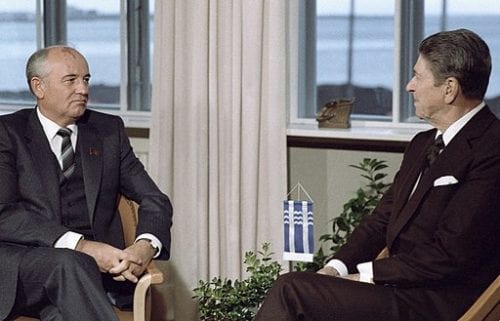
NSC 68 gives the motivation for that sort of approach. Thirty-three years later (Doc 42), Reagan called for a Strategic Defense Initiative. One of the hardened shibboleths about the end of the Cold War is that the US pursuit of SDI forced the Soviet Union to do the same thing, and this bankrupted it. The story is not quite that simple. At the Reykjavík summit in which Reagan proposed eliminating all strategic nuclear arms on both sides, SDI became a sticking point. Reagan maintained that SDI was a defensive system. Gorbachev countered this, saying that if SDI became workable—and he emphasized his skepticism it would—it would be an offensive system, because it would protect the US from reprisals should it carry out a first strike. Of course, even without SDI, any attempt to eliminate strategic nuclear arms on both sides would have been long and difficult. But the Soviet Union’s economic problems began far before the issue of SDI; its centrally planned economy didn’t work.
What lessons can we learn from the way the Cold War unfolded and the way it ended?
Alliances matter. Truman’s administration led the formation of the North Atlantic Treaty Organization, and subsequent administrations expanded it, while dedicating resources to making the treaty meaningful. That’s how the line is held; without NATO, containment of the Soviets in Europe is not possible. Two other examples involve multilateralism, pursued through the UN. The action the US takes to prevent the North Korean takeover of the Korean Peninsula is channeled through the UN. The resolutions of its Security Council authorized US military action, just as they would authorize the actions of the US and coalition partners in the Gulf in 1990 to 1991.
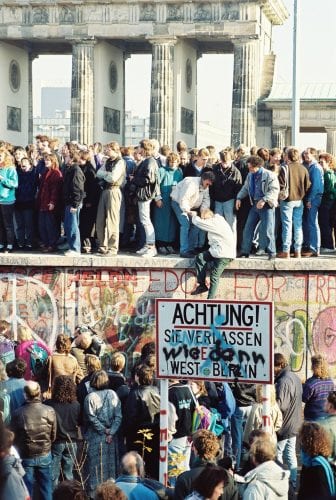
Careful diplomacy also matters, as George H. W. Bush understood. His management of the Gulf War gets a lot of attention, but it is sometimes overlooked that he’s managing the end of the Cold War at the same time. Those two problems intersected. During the build-up to military action in the Gulf, the Soviet Union made a sudden late move to negotiate Iraqi withdrawal from Kuwait by sending emissaries to Baghdad to meet with Saddam Hussein. This was very problematic for Bush, who was carefully building an international coalition to confront Saddam. Stationing western forces on Saudi soil meant building a truly international task force of both Muslim and Christian troops. Bush also had to keep Israel from taking independent action against Iraq after it attacked Israel with Scud missiles. When the Soviets sent emissaries to Baghdad, Bush could not simply tell them to get out of the way. That would have repercussions for the newly independent nations in Europe. If you go back to NSD 23, where the National Security Council says the Soviets have to demonstrate willingness to work within the international order—well, the US has to do that too. Bush has to say, “Okay, if you want to try this, all right, but remember, we’re organizing a coordinated action through the UN, and you’re part of the UN.”
Nothing came of the Soviet overture. Saddam was committed to his course of action. He thought that all he had to do was to inflict, at the outset of war, some substantial casualties on the international coalition. Then the public would turn against the war and he would be able to negotiate a settlement that might involve partial occupation of Kuwait. He was mistaken, of course.
Will we see something like the Cold War recur?
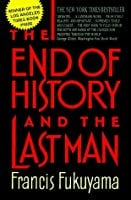
I don’t think we will see another ideology like communism—one with such international appeal, causing an alignment under one or more powerful nations that support the spread of it. Shortly after the fall of the wall, a state department planner named Francis Fukuyama published The End of History and the Last Man, based on a paper he wrote within the State Department. Fukuyama argued that with the collapse of communism, liberalism stood unquestioned. The western values of representative government had triumphed; hence future major conflicts based on ideology were unlikely. Events since then have shown this assessment to be overly optimistic. Look at the resurgence of nationalism that has occurred in many parts of the world. Still, while that causes problems the US has to manage in its foreign relations, there is no ideological thread linking it all together.
Yet even under communism, US policy-makers tended to mistakenly lump all communists into the same box. Because Ho Chi Minh got his education in Moscow, they thought of him as a mere puppet of the Soviet Union. Few grasped that he had created a hybrid of Marxist ideology with Vietnamese values and cultural traditions. Within the bipolar Cold War world, there were lots of variants.
Even less will the abhorrent policies and practices of the Islamic State spread globally. Its warped view of Islam and of social relations may show up in other groups, but who will coordinate an international movement? It’s a very decentralized phenomenon.
What should we celebrate thirty years after the fall of the wall?
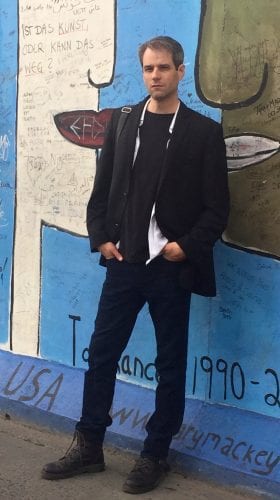
When you think that the Cold War could have ended in the explosion of nuclear weapons, it’s a dramatic and positive outcome. And its conclusion on that night in November 1989, with crowds of people flowing back and forth through the walls, was stunning. Hours before, if people had done that they would have been killed in terrible ways—shot, mauled by dogs, obliterated by landmines. Yet for years they’d devised ingenious ways to get past that barrier—hot air balloons, gliders. . . . At the museum in Berlin, at Checkpoint Charlie, there’s an exhibit showing a tiny West German car owned by a West German who had a petite East German girlfriend. He hollowed out a passenger seat so that she could crawl into it, sealed it over her, and drove her across the checkpoint. Later, the East Germans deployed dogs to prevent that kind of thing. I love the scene Kohl describes—all these people going back and forth repeatedly, as if they were checking, in the way you check to make sure you locked the door of your house, to make sure they really could get through.

